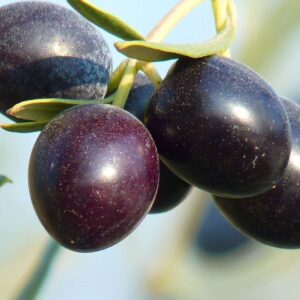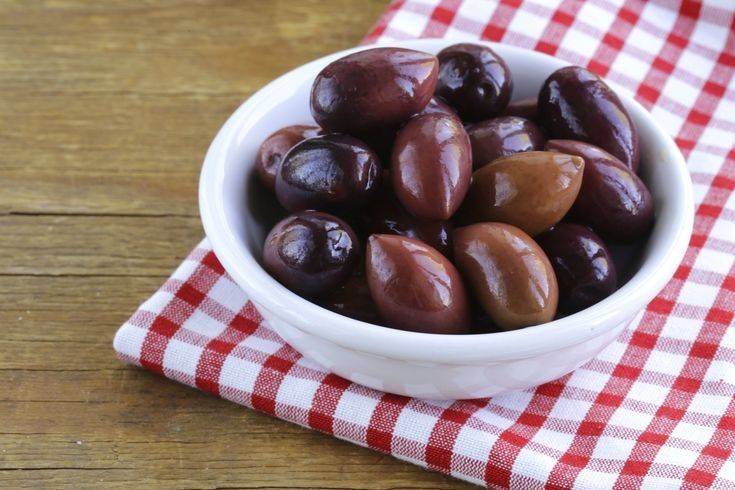“The Delicious and Nutritious Olives: A Culinary Treasure from Greece“
I. Introduction
Greek cuisine is known for its flavorful and healthy dishes, and one of the key ingredients that adds a distinctive taste to these dishes is Kalamata olives. These dark purple olives, with their rich and tangy flavor, are popular all over the world. In this blog, we will explore the origins, characteristics, culinary uses, health benefits, and sustainability of Kalamata olives.
II. Origins of Olives
Kalamata olives are named after the city of Kalamata in southern Greece, where they were first cultivated. The city’s warm climate, fertile soil, and proximity to the Mediterranean Sea create the perfect conditions for growing olives. These olives are also grown in other parts of Greece, including Peloponnese and Crete.

III. Characteristics of Olives
Kalamata olives are easily recognizable due to their dark purple color and almond-like shape. They have a meaty texture and are larger than other varieties of olives. When ripe, they have a deep, rich flavor with a hint of bitterness and a strong aroma.
read also:what does saffron taste like
Besides being delicious, Kalamata olives are also a good source of nutrients. They are low in calories but high in monounsaturated fats, which are considered healthy for the heart. They also contain important minerals such as iron and calcium and are rich in antioxidants that protect our cells from damage.
IV. Culinary Uses of Olives
Kalamata olives are a staple in Greek cuisine and are used in various traditional dishes. They are often served as part of a Greek salad or used in tapenade, a spread made with olive oil, capers, and herbs. They are also a key ingredient in dishes like pastitsio, a Greek version of lasagna.
In addition to Greek cuisine, Kalamata olives are also popular in other Mediterranean countries. They can be used as toppings on pizzas, added to pasta sauces, or used as fillings in sandwiches. Their bold and distinct flavor adds depth to any dish they are added to.
V. Health Benefits of Olives
Aside from their delicious taste and versatility in cooking, Kalamata olives also offer numerous health benefits. As mentioned, they are high in monounsaturated fats, which have been linked to a reduced risk of heart disease. They also contain powerful antioxidants that help protect against chronic diseases and promote healthy aging.
Moreover, Kalamata olives are a good source of minerals such as iron and calcium, which are essential for maintaining strong bones and a healthy immune system.
VI. Differences between Kalamata Olives and Other Olives
There are many varieties of olives, but what makes Kalamata olives stand out from the rest? One major difference is their size – they are larger than other types of olives. Another difference is their taste and texture. Kalamata olives have a stronger flavor and a meatier texture compared to other varieties.
The production and curing methods also play a role in the differences between Kalamata olives and others. These olives are cured in a brine solution before being sold, giving them their distinctive flavor and color.
VII. How to Choose and Store Olives
When buying Kalamata olives, it’s important to choose high-quality ones for the best taste and nutritional value. Look for plump and shiny olives with no signs of bruising or discoloration. It’s also recommended to buy olives from reputable brands or local producers to ensure freshness.
To maintain their flavor and freshness, store Kalamata olives in an airtight container or jar filled with brine in the refrigerator. If stored properly, they can last us months.
VIII. Sustainability and Environmental Impact of Olive Production
Sustainability and ethical practices are becoming increasingly important factors for consumers when choosing their food. The good news is that olive production is considered sustainable, as it is a low-impact and environmentally friendly process.
However, there are still concerns about the use of chemicals and water resources in olive production. To support sustainable practices, it’s important to buy from producers who follow sustainable farming methods and prioritize fair trade.
read also:health and fitness jobs
IX. Fun Facts and Trivia about Kalamata Olives
Did you know that olives have been cultivated for over 6,000 years, making them one of the oldest cultivated crops in the world? It’s also believed that the first olive tree was brought to Greece from Asia Minor by the goddess Athena.

In Greek mythology, olives were also considered a symbol of peace, wisdom, and fertility. In modern times, Greece is the third-largest producer of olive oil in the world, with Kalamata olives being a significant contributor to this industry.
X. Conclusion
Kalamata olives are not just a tasty addition to our meals; they also offer numerous health benefits and have a rich history and cultural significance in Greece. Whether you enjoy them in traditional Greek dishes or incorporate them into your own recipes, these olives are a must-try for all food lovers. So next time you’re at the grocery store, be sure to pick up a jar of Kalamata olives and savor their unique flavor and culinary value.
